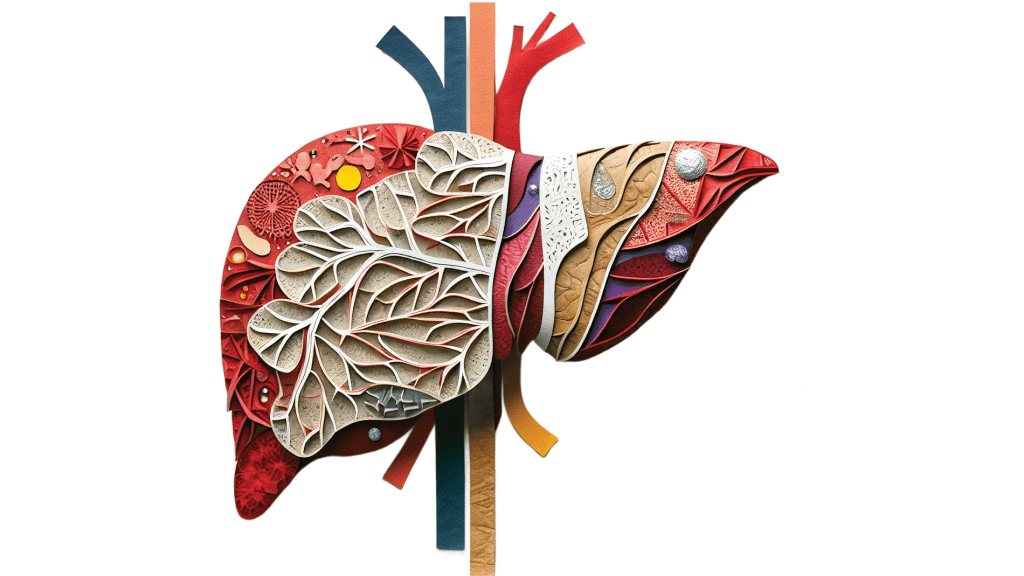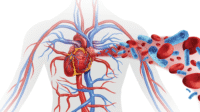Nurses in this role serve as the face of the transplant team.
- Living donor liver transplant (LDLT) is an emerging modality of transplant in the United States that requires a specialized, experienced team to care for both the recipient in end-stage liver disease and the healthy living donor stepping forward to save someone’s life.
- The transplant coordinator, a vital team member, frequently serves as the primary contact for these patients as they navigate the evaluation process.
- Transplant coordinator scope of practice has evolved from its origins in deceased donor procurement to encompass a wide range of responsibilities for potential transplant recipients and potential living donors in the outpatient setting.
- Describe the nurse’s role as the living donor liver transplant (LDLT) coordinator.
- Discuss the LDLT recipient and donor selection process.
- Explain how the LDLT coordinator supports both the donor and recipient through the selection, waitlist, and post-op stages.
No relevant financial relationships were identified for any individuals with the ability to control content of the activity.
Expiration: 10/1/27
Living donor liver transplant (LDLT) has helped overcome the global shortage of donor organs. Live liver donors who electively undergo major abdominal surgery require specific care and expertise to ensure their safety. In the outpatient transplant clinic, transplant coordinators provide education, obtain consent, and organize the care of potential transplant recipients and living donors. As essential members of the transplant team, these coordinators use their extensive knowledge and experience to expertly guide patients through their evaluations, providing psychological as well as medical and logistical support during the stressful transplant process.
Care and collaboration equal successful organ donation
Exploring organ donation with families of pediatric patients
Liver transplant history
The first liver transplant in the United States occurred in 1963. Several other countries followed suit; by 1970, 35 active liver transplant programs existed around the world. Advances in surgical technique led to successful split or segmental liver transplants using deceased donors. In these procedures, surgeons carefully divide the liver into lobes or sections, which are then transplanted into two recipients. These surgeries eventually paved the way for LDLTs, the first of which occurred in Asia in the 1980s. (See Liver transplants by donor type.)
UNOS and OPTN
Also in the 1980s, the U.S. United Network for Organ Sharing (UNOS) and the Organ Procurement and Transplantation Network (OPTN) launched an effort to streamline transplants across the country and improve patient access. UNOS, a non-profit organization, manages the national waitlist, collects data on recipients and donors, and provides education for transplant professionals. UNOS manages OPTN, which oversees all transplant programs in the United States in conjunction with the Department of Health & Human Services and the Health Resources and Services Administration. All transplant programs follow OPTN policies and regulations and regularly report donor and recipient data to UNOS.
New UNOS nomenclature
In October 2024, UNOS adopted a new worldwide nomenclature for alcoholic cirrhosis and NASH cirrhosis per the American Association for the Study of Liver Diseases (AASLD). Alcoholic cirrhosis will be classified as alcohol-associated liver disease (ALD), and NASH cirrhosis as metabolic dysfunction associated steatotic liver disease (MASLD). The recognized increasing overlap of the two will be classified as MetALD (MASLD and increased alcoholic intake).
LDLT in the United States
The first LDLTs in the United States took place at the University of Chicago Medical Center in November 1989. These transplants of adult donors and pediatric recipients used the left lobe of the liver. Around 1997, as transplant programs grew in experience and expertise, surgeons began performing adult-to-adult LDLTs using the larger right lobe of the liver. By 2001, more than 500 LDLTs had been performed in the United States.
After 2001, two factors led to a decrease in LDLTs nationwide. The first involved the 2002 implementation of the Model for End-stage Liver Disease (MELD) scoring system, which replaced the Child-Pugh score for prioritizing patients on the liver transplant waitlist. Using MELD, UNOS more effectively determined transplant urgency and allocated organs more appropriately to sicker patients, which led to an increase in deceased donor transplants and a decrease in LDLT. The second factor involved sentinel surgical events that resulted in donor deaths (see Patient safety section below).
Currently, UNOS uses MELD 3.0 to allocate organs to waitlist patients. Patients with higher MELD scores have priority for deceased donors, and those with lower scores frequently are encouraged to pursue LDLT. With a cleared donor, transplant recipients can bypass the waitlist with surgery scheduled when the recipient is at their healthiest and has all support systems in place.
Patient safety
Several sentinel events, which led to donor deaths, prompted many transplant centers to re-evaluate their programs and initiate safety protocols. In a retrospective study of all potential living liver donors in the United States from 1998 to 2003, eight experienced life-threatening complications and three died after their surgeries. Complications included biliary leaks, bacterial infections, and incisional hernias, which required readmissions and reoperations.
Improvements in radiologic imaging and 3D constructions of vasculature performed as far ahead of surgery as possible help to ensure safety. Surgical techniques, including partially and fully laparoscopic procedures, have begun to replace open hepatectomies. Other advances include robotic and minimally invasive hepatectomies. A systematic review comparing surgical techniques for donor hepatectomy for more than 2,000 patients demonstrated that, although all operations had comparable risk of biliary and wound complications, laparoscopic and robotic hepatectomies were associated with lower blood loss and fewer overall donor complications compared to open hepatectomies.
Transplant coordinator role
The role of transplant coordinator originated in the United States in the 1960s, about the same time as the development of organ procurement agencies (OPAs) (now known as organ procurement organizations [OPOs]). Originally, coordinators and OPOs worked to assist in the assessment, preservation, and transportation of transplantable organs outside of the geographic region where they were recovered. In this original setting and in the inpatient setting today, transplant coordinators work alongside OPOs and hospital staff with the patients who meet specific criteria and their families to determine organ donor candidacy. These coordinators (also referred to as recovery or procurement coordinators) provide patient and family education about the donation process and offer emotional support throughout testing and eventual donation.
Transplant coordinators play an essential role on the interprofessional transplant team, which also includes physicians, surgeons, social workers, registered dietitians, and additional clinicians as required by the patient’s history. Most transplant coordinators are RNs or advanced practice RNs.
Expansion of the transplant coordinator scope and responsibilities to include assisting in the pre-, peri- and post-transplant phases for recipients and donors means that many now work in outpatient clinics as well as in hospitals and in association with OPOs. As staffing permits, donor and recipient teams (including coordinators) should work as separately as possible to maintain donor confidentiality; however, U.S. transplant centers don’t currently require this.
Coordinators based in clinics may be referred to as clinical transplant coordinators to differentiate them from recovery coordinators. The American Board for Transplant Certification provides distinct nursing certifications for both types of coordinators: certified procurement transplant coordinator and certified clinical transplant coordinator (CCTC). “Transplant coordinator” in the context of this article refers specifically to clinical coordinators.
Recipient and donor selection process
All recipients and donors undergo an extensive medical, surgical, and psychosocial evaluation overseen by their respective coordinators. These evaluations consist of lab work, imaging studies, cardiac testing, cancer screening, and consultations with members of the transplant team and other specialties as needed. Coordinators ensure timely completion and review of all patient testing.
The coordinator also educates patients and their caregivers on the transplant process and communicates any additional needs to the interprofessional team. In this way, transplant coordinators frequently serve as liaisons between patients and the rest of the team. Frequently, they’re the first and most regular point of contact for transplant patients and their caregivers.
Review of potential recipient or donor evaluation testing occurs at an interprofessional selection meeting. Although no single person makes the final decision for any patient, the transplant coordinator typically delivers the result to the patient. This can be an emotionally charged conversation that the coordinator must navigate with professionalism.
Recipient and donor coordinators have some core responsibilities in common, but they have distinct roles.
Recipient coordinator
Frequently, transplant coordinators are the first clinicians potential transplant recipients and their caregivers meet after being told that they have end-stage organ disease and may need a transplant. Whether these are sudden diagnoses or the result of a progressive chronic disease, the news can prove overwhelming at best and debilitating at worst. Recipient coordinators serve as both navigator and educator during the evaluation process, guiding patients and caregivers through the battery of tests and consultations they must complete.
Recipient evaluation
Evaluations can vary in complexity depending on the original cause of liver disease (for example, alcoholic cirrhosis, non-alcoholic steatohepatitis [NASH] cirrhosis, and liver cancer/hepatocellular carcinoma) and may require multiple tests and consultations. Coordinators provide logistical and emotional support throughout these evaluations. (See Listing diagnoses.)
Listing diagnoses
Based on Organ Procurement and Transplantation Network data, as of August 4, 2024, the following diagnoses are the most common among potential U.S. liver transplant recipients.
Alcoholic cirrhosis. Many transplant centers require 6 months of sobriety for transplant candidates with alcoholic cirrhosis. Coordinators for these patients must order and schedule sobriety tests, ensure that as much evaluation testing as possible can be completed within the sobriety period, and collaborate with social work to confirm patient enrollment in a relapse prevention program. Transplant coordinators create a safe, nonjudgmental environment for these patients, who may feel stigmatized due to the etiology of their liver disease.
NASH cirrhosis. Patients with NASH cirrhosis frequently have additional metabolic disorders such as diabetes and coronary artery disease. These comorbidities require additional consultations with endocrinology and cardiology. Transplant coordinators work extensively with transplant dietitians and may refer patients to weight loss programs as appropriate. With increasing rates of obesity in the United States, NASH prevalence is increasing and it’s currently the number one listing diagnosis among women.
Liver cancer. Transplant candidates with liver cancer must undergo more frequent imaging and blood tests to monitor for lesion progression and metastasis; extra-hepatic involvement (for example, metastasis to lungs or bone) serves as an automatic contraindication to transplant. Some transplant candidates with liver cancer may qualify for an increased MELD score (MELD exception) based on these tests and treatment history. When patients are added to the waitlist, transplant coordinators apply for these exceptions and keep the applications up to date with UNOS.
Waitlist management
Once a patient is added to the transplant waitlist, the coordinator’s responsibilities shift from evaluation progression to waitlist management. Regardless of listing diagnosis, to remain active on the liver transplant waitlist, MELD labs must be drawn and reported to UNOS at regular intervals. The frequency of these labs depends on the patient’s MELD score, with higher scores requiring more frequent testing. The coordinator ensures these labs are ordered, drawn, and updated in the UNOS system. They also maintain contact with the patient, ensure their evaluation testing is up-to-date, and inform the transplant team of any illnesses or vacations that might affect the patient’s ability to be called in for transplant.
Patients on the transplant waitlist with lower MELD scores can wait as long as months to years for a deceased donor transplant. Unfortunately, many of these patients are “underserved”; they may have symptoms of liver disease (such as intractable pruritis or pancytopenia) that dramatically affect quality of life but aren’t reflected in their score. Recipient coordinators play an important role in keeping these patients engaged and encouraged during these stressful and sometimes disheartening wait times.
LDLT education and coordination
If the transplant center offers LDLT, recipient coordinators can advocate for the procedure and provide education to eligible transplant candidates. Because LDLT isn’t widely performed in the United States, patients may not be aware of it. Many misconceptions about LDLT (fear of complications or the belief that the donor must be a blood relative) also may prevent potential recipients from pursuing this option. Coordinators work closely with the donor team to ensure accurate recipient education and appropriate candidate identification.
When a potential recipient has a donor in evaluation, the recipient coordinator works to manage recipient expectations regarding disclosure of donor workup and surgery scheduling. Coordinators make clear to recipients that the transplant team will not share any donor information (medical history, testing results, or reason for donor decline if that occurs). The recipient will know how many people are in the referral and evaluation phases, and, if the donor agrees, whether someone has been cleared for donation.
Donor coordinator
The primary role of the donor coordinator is to ensure donor safety. Most potential donors have generally good health with varying degrees of engagement with the healthcare system, so the coordinator must assess the patient’s understanding of LDLT and provide education.
Donor coordinators can work with potential transplant recipients and their coordinators in various ways. They may help create outreach campaigns to find a living donor and facilitate educational sessions with the living donor team for potential recipients and their caregivers. Donor coordinators also collaborate with recipient coordinators to confirm recipient appropriateness for LDLT and report results of outreach and evaluations.
The evaluation of the potential living liver donor includes many of the same recipient evaluation items (lab work, imaging, health maintenance testing). Most potential recipients are familiar with this process, but potential donors may find the dozens of blood tests, multiple abdominal scans, and frequent clinic visits intimidating. Donor coordinators serve as a resource for and offer support to potential donors, especially if the patient has no previous medical history and requires additional tests or consultations.
Ensuring donor safety also includes preserving donor confidentiality, privacy, and autonomy. Living donors make a selfless decision to electively undergo major abdominal surgery to help save another person’s life. They must understand all of the risks of donation and be offered the option to postpone or cancel their evaluation or surgery if they so choose without coercion or guilt. To accomplish this, donor coordinators work closely with social workers and independent living donor advocates (ILDAs) to complete the donor psychosocial evaluation. ILDAs have no contact with the recipient and focus exclusively on advocating for the living donor. (See Anonymous donors.)
Anonymous donors
Most U.S. living donor liver transplants are directed donations in which the donor and recipient know each other in some capacity. However, some transplant programs use anonymous donors or non-directed donors (NDDs). In these situations, the recipient doesn’t know and may never know the donor. Some view NDDs as controversial, with most abstaining transplant centers citing ethical concerns. NDD evaluations frequently involve additional psychosocial assessments with an emphasis on donor motivation, informed consent, and support systems.
Declining a donor
The threshold for clearing potential liver donors is extremely high. Reasons for declining a potential donor include discovery of conditions such as diabetes and infectious disease, complicated hepatic or biliary vasculature, and insufficient liver volume. Liver volume can be insufficient either in the amount available to give to the recipient or in the amount that would remain for the donor after the surgery. Being declined as a donor can be distressing, especially if the individual has a personal connection to the recipient. Donor coordinators work with ILDAs and other team members as necessary to help patients navigate next steps, which may include following up on conditions uncovered during the evaluation.
Some states have a mandated reflection period for cleared living donors, which prohibits scheduling surgery for a set period (for example, 2 weeks in New York). Donor availability and recipient readiness factor into scheduling surgery.
Post-donation follow-up
After surgery, the donor coordinator schedules follow-up appointments for the donor. In addition to follow-ups required by the transplant center, UNOS requires reported donor follow-up at 6 months, 1 year, and 2 years after donation. These follow-ups include lab work and surveys on functional status and quality of life. These data help track living donor outcomes in the United States.
Transplant coordinator support
Transplant coordinators wear many hats—nurse, educator, scheduler, and support for patients and caregivers during a vulnerable time. As the primary contact throughout the transplant process, coordinators develop close relationships with patients and their families. In best-case scenarios, coordinators get these patients on the waitlist and then see them through the surgery. In worst-case scenarios, coordinators may witness patients decompensate and die before they receive a transplant. Some coordinators may experience both outcomes in the same day. The emotional labor undertaken by coordinators can prove physically and psychologically taxing; many coordinators report emotional exhaustion and burnout.
In a 2021 study by Lerret and colleagues on job satisfaction among U.S. transplant coordinators, most reported high job satisfaction and happiness with interprofessional collaboration; they found their work fulfilling. However, coordinators also reported a demanding workload and a lack of career development opportunities as barriers to job satisfaction. They cited this demanding workload as involving a combination of the complexity of work tasks, patient acuity, and lack of mentoring and supervision. Study respondents highlighted continuing education opportunities and supervisor support for professional development as areas of improvement for transplant centers.
In the specific context of LDLT, patient management may prove especially delicate. As primary contacts for their patients, transplant coordinators must strike a balance between supplying enough information to ensure patients are informed while not disclosing sensitive information about either the donor or the recipient that would lead to undue influence on either side. Coordinators who care for both recipients and donors may find this aspect especially difficult. Ideally, donor and recipient teams should remain as separate as possible.
Tremendous responsibility
The role of transplant coordinator has evolved considerably since the 1960s to cover a wider scope of practice in the outpatient clinic. As the face of the transplant team for most patients, coordinators shoulder tremendous responsibility in the evaluation and management of potential recipients and donors. In LDLT, recipient and donor coordinators work together to ensure that both patients achieve good outcomes. This work begins with coordinator-led education and guidance for potential recipients and donors before any donors come forward.
Although satisfying and fulfilling, transplant coordination also comes with considerable stress. All transplant coordinators require support from their teams and transplant administration to ensure patients receive the highest quality of care and attention.
Patricia T. Canda is a liver transplant coordinator at NYU Langone Health in New York City, New York.
American Nurse Journal. 2024; 19(10). Doi: 10.51256/ANJ102406
References
Bokek-Cohen Y, Tarabeih M. The emotional labor of the transplant coordinator: An inherent predicament. Transplant Proc. 2021;53(6):1846-52. doi:10.1016/j.transproceed.2021.06.022
Cupples S, Lerret S, McCalmont V, Ohler L. Core Curriculum for Transplant Nurses. 2nd ed. Philadelphia, PA: Lippincott, Williams & Wilkins; 2016.
Fox AN, Liapakis A, Batra R, et al. The use of nondirected donor organs in living donor liver transplantation: Perspectives and guidance. Hepatology. 2022;75(6):1579-89. doi:10.1002/hep.32260
Ghobrial RM, Freise CE, Trotter JF, et al. Donor morbidity after living donation for liver transplantation. Gastroenterology. 2008;135(2):468-76. doi:10.1053/j.gastro.2008.04.018
Goldaracena N, Barbas A. Living donor liver transplantation. Curr Opin Organ Transplant. 2019;24(2):131-7. doi:10.1097/MOT.0000000000000610
Kasper P, Lang S, Steffen HM, Demir M. Management of alcoholic hepatitis: A clinical perspective. Liver Int. 2023;43(10):2078-95. doi:10.1111/liv.15701
Lerret SM, Stendahl G, Alexander S, Pendegraft A, Hoy H. A descriptive study of transplant coordinator job satisfaction. Prog Transplant. 2021;31(3):228-35. doi:10.1177/15269248211024617
Newman J. Then and now: Living donor liver transplantation. United Network for Organ Sharing. March 24, 2020. unos.org/news/improvement/then-and-now-living-donor-liver-transplantation
O’Rourke M, Arnott L, Goldman JS. Living liver donors: A coordinator’s perspective. Prog Transplant. 2003;13(2):82-7. doi:10.1177/152692480301300202
Rinella ME, Lazarus JV, Ratziu V, et al. A multisociety Delphi consensus statement on new fatty liver disease nomenclature. Hepatology. 2023;78(6):1966-86. doi:10.1097/hep.0000000000000520
Sharma S, Saner FH, Bezinover D. A brief history of liver transplantation and transplant anesthesia. BMC Anesthesiol. 2022;22(1):363. doi:10.1186/s12871-022-01904-1
Staufer K, Stauber RE. Steatotic liver disease: Metabolic dysfunction, alcohol, or both? Biomedicines. 2023;11(8):2108. doi:10.3390/biomedicines11082108
United Network for Organ Sharing. Liver policy: Exception scores. unos.org/policy/liver/exception-scores
Wight C. Organ procurement: The role of the transplant coordinator. Ann Acad Med Singap. 1991;20(4):559-62.
Yeow M, Soh S, Starkey G, et al. A systematic review and network meta-analysis of outcomes after open, mini-laparotomy, hybrid, totally laparoscopic, and robotic living donor right hepatectomy. Surgery. 2022;172(2):741-50. doi:10.1016/j.surg.2022.03.042
Key words: transplant, living donor, liver, liver transplant, liver transplant coordinator


















